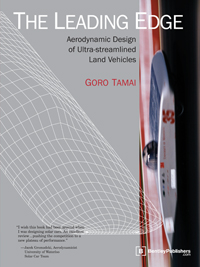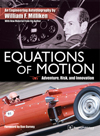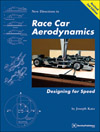|
The Leading Edge summarizes the aerodynamic design and construction issues of solar cars and ultralight land vehicles. Author Goro Tamai draws on his own experience in designing solar cars at MIT to produce a book for the ground-up streamlined land-vehicle designer or constructor, as well as for the solar/electric/ultralight vehicle enthusiast. As with any engineering problem, the "best" body shape for solar cars, HPVs, or Electrathoners is not the body of absolute lowest drag. The vehicle system, in-cluding the driver, chassis, and energy/drive system must work in concert to produce the maximum output. The Leading Edge will help designers quantify the trade-offs, and make logical decisions.
Technical highlights:
- Vehicles covered include solar cars, human-powered vehicles (HPV), solar bikes, electrathon racers, ground-up hybrid or pure electric vehicles, and fuel-economy record cars.
- Numerous examples using specific race cars and teams, and how designers solved problems.
- Full definition of terms, with equations and examples provided for determining key aerodynamic parameters.
- All design and construction issues, from body shape, to wheels, to canopy integration, to solar panel sizing.
- How to do in-the-field testing and diagnosis of aerodynamic performance.
- Special overview section reviews the history of ultra-streamlined land vehicle development.
Additional technical content
For additional technical content for The Leading Edge, visit our online technical library by clicking below.
Online Technical Library
Engineering > The Leading Edge
|
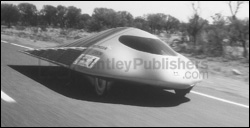
Chapter 1: General Aerodyanmic Concepts
Fig. 1.3.5: An example of a well streamlined vehicle, the 1990 Honda Dream. Honda's 1993 entry improved upon the 1990 car by better fairing the wheels and sealing the wheel wells.
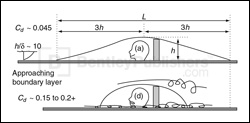
Chapter 4: Vehicle-Level Aerodynamic Details
Fig. 4.3.16: Illustration of a separation-free baseline canopy with L/h of about 6.
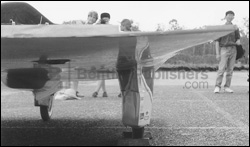
Chapter 4: Vehicle-Level Aerodynamic Details
Fig. 4.1.3: The rear-wheel fairing of the 1996 Aurora 101 was designed such that the fairings intersect the main body at a right angle, minimizing the interference drag along the sides of the fairings.
|
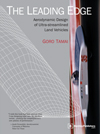
![[B] Bentley Publishers](http://assets1.bentleypublishers.com/images/bentley-logos/bp-banner-234x60-bookblue.jpg)
